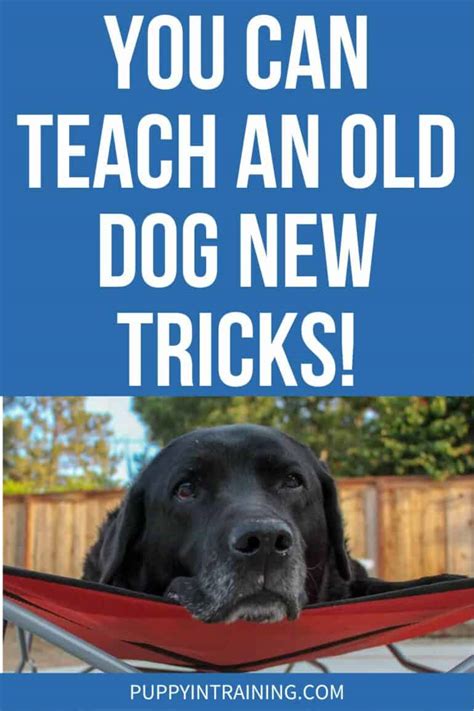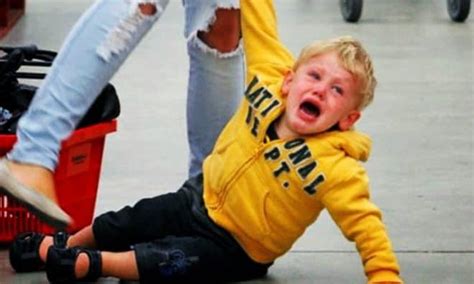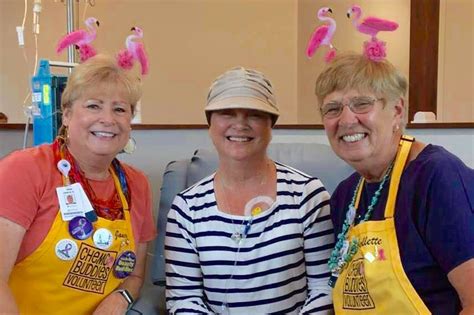
A senior dog named Louis, initially set in his ways, has undergone a heartwarming transformation after the introduction of a lively puppy named Gus, proving that even older dogs can learn new tricks and embrace change.
Louis, a seasoned canine, initially displayed signs of resistance when Gus, the energetic puppy, entered his life. However, through patience and positive reinforcement from his owner, Megan Broderick, Louis gradually warmed up to his new companion, showcasing a remarkable adaptation that has captivated many online. This heartwarming story highlights the adaptability of senior dogs and the potential for positive change, even in their later years.
Megan Broderick, a dog lover, decided to introduce Gus into Louis’ life with the hope of injecting some youthful energy and companionship. Initially, Louis wasn’t thrilled with the idea. “Louis had been an only child for a while, so he was definitely used to having things his way,” Broderick explained. The introduction was gradual, allowing Louis to adjust at his own pace. Broderick closely monitored their interactions, ensuring that Louis felt safe and secure.
The first few days were challenging. Louis would often retreat to his favorite spots, avoiding Gus’ playful advances. Broderick noticed that Louis seemed overwhelmed by the puppy’s boundless energy. “He would give me these looks like, ‘Mom, can you please control this tornado?'” she recalled. However, Broderick remained patient, knowing that it would take time for Louis to adjust.
She implemented a strategy that focused on positive reinforcement. Whenever Louis showed any sign of tolerance or engagement with Gus, he was rewarded with treats and praise. Broderick also made sure that Louis had plenty of his own space where he could retreat when he needed a break from the puppy’s antics.
Slowly but surely, Louis began to show signs of acceptance. He started tolerating Gus’ presence and even engaging in brief play sessions. Broderick was overjoyed to witness this transformation. “It was like a weight lifted off my shoulders,” she said. “I could see that Louis was starting to enjoy Gus’ company.”
The turning point came when Louis started initiating interactions with Gus. He would nudge the puppy with his nose or lick his head, gestures that signaled a growing bond between the two dogs. Broderick captured these moments on camera and shared them on social media, where they quickly went viral. People were touched by Louis’ willingness to embrace change and Gus’ ability to bring out the best in the older dog.
“It’s been amazing to watch their relationship evolve,” Broderick said. “Louis is definitely more playful and energetic now that Gus is around. He’s like a puppy again himself.”
The story of Louis and Gus serves as a reminder that senior dogs are capable of adapting and learning new behaviors. It also highlights the importance of patience and positive reinforcement when introducing a new pet into a household with an older dog. With the right approach, it’s possible to create a harmonious environment where dogs of all ages can thrive.
The Importance of Introducing a Puppy to a Senior Dog
Introducing a puppy to a senior dog can be a delicate process that requires careful planning and execution. Senior dogs often have established routines and may be less tolerant of the disruptions that a puppy can bring. However, with the right approach, the introduction can be successful and even beneficial for both dogs.
- Benefits for the Senior Dog: A puppy can bring renewed energy and playfulness into a senior dog’s life, helping to combat boredom and loneliness. The puppy’s presence can also stimulate the senior dog’s mind and body, encouraging them to stay active and engaged.
- Benefits for the Puppy: A senior dog can provide a calming and stabilizing influence for a puppy. The puppy can learn valuable social skills from the older dog and develop a sense of security and companionship.
Steps for a Successful Introduction
-
Preparation is Key: Before introducing the dogs, make sure that the senior dog is healthy and up-to-date on vaccinations. It’s also a good idea to consult with a veterinarian to discuss any potential health concerns.
-
Scent Introduction: Start by allowing the dogs to get used to each other’s scent without direct contact. You can do this by swapping blankets or toys between the two dogs.
-
Controlled Meetings: When you’re ready to introduce the dogs in person, do so in a controlled environment, such as a neutral area or on leashes. Keep the initial meetings short and supervised.
-
Positive Reinforcement: Use positive reinforcement to reward both dogs for calm and positive interactions. Give them treats, praise, and attention when they are behaving well.
-
Separate Spaces: Make sure that both dogs have their own separate spaces where they can retreat when they need a break from each other. This will help to prevent conflicts and ensure that both dogs feel safe and secure.
-
Supervision is Essential: Always supervise the dogs when they are together, especially in the early stages of the introduction. Be prepared to intervene if you see any signs of aggression or discomfort.
-
Patience is a Virtue: Remember that it can take time for the dogs to adjust to each other. Be patient and consistent with your approach, and don’t get discouraged if there are setbacks along the way.
Addressing Potential Challenges
Introducing a puppy to a senior dog can present several challenges, including:
- Aggression: Senior dogs may become aggressive towards puppies if they feel threatened or overwhelmed. It’s important to recognize the signs of aggression, such as growling, snapping, or baring teeth, and to intervene immediately if you see these behaviors.
- Resource Guarding: Senior dogs may also exhibit resource guarding behaviors, such as protecting their food, toys, or sleeping areas from the puppy. To prevent this, make sure that both dogs have their own separate resources and that the senior dog’s resources are kept out of the puppy’s reach.
- Health Concerns: Senior dogs may have underlying health conditions that can be exacerbated by the presence of a puppy. It’s important to monitor the senior dog’s health closely and to consult with a veterinarian if you notice any changes in their behavior or physical condition.
- Energy Levels: The difference in energy levels between a puppy and a senior dog can also be a challenge. Puppies tend to be very energetic and playful, while senior dogs may prefer to rest and relax. It’s important to provide both dogs with opportunities to exercise and play at their own pace.
Expert Advice on Senior Dog Adaptations
Veterinarians and animal behaviorists emphasize the importance of understanding the specific needs of senior dogs when introducing a new pet into the household. They suggest that owners should be aware of potential age-related health issues, such as arthritis, vision loss, and hearing loss, which can affect a senior dog’s ability to interact with a puppy.
Dr. Emily Carter, a veterinarian specializing in geriatric animal care, advises, “It’s crucial to have a thorough veterinary check-up for your senior dog before bringing a puppy home. This will help identify any underlying health issues that could be aggravated by the stress of adapting to a new companion.”
Animal behaviorists recommend gradual introductions, allowing the dogs to acclimate to each other’s scents and presence before direct interaction. “Start with scent swapping by exchanging blankets or toys between the dogs,” says Sarah Johnson, a certified dog trainer. “Then, progress to supervised, leashed interactions in a neutral environment. This allows you to control the situation and prevent any negative experiences.”
Experts also stress the importance of providing the senior dog with a safe space where they can retreat from the puppy’s energy. “A quiet room or a comfortable bed where the puppy isn’t allowed can be a lifesaver for a senior dog who needs a break,” Johnson adds.
Furthermore, owners should be mindful of the senior dog’s limitations and adjust their expectations accordingly. “Don’t force the senior dog to play if they’re not interested,” Dr. Carter advises. “Allow them to interact at their own pace and reward them for positive interactions with the puppy.”
By following these expert tips, owners can increase the likelihood of a successful introduction and create a harmonious environment where both the senior dog and the puppy can thrive. The story of Louis and Gus serves as an inspiring example of how a senior dog can adapt and even benefit from the companionship of a younger, more energetic canine.
The Broader Implications of the Story
The story of Louis and Gus extends beyond a heartwarming tale of canine companionship. It touches on several important themes, including the adaptability of senior animals, the benefits of intergenerational relationships, and the importance of patience and understanding in animal care.
- Adaptability of Senior Animals: The story challenges the common misconception that senior animals are resistant to change. Louis’ willingness to embrace Gus demonstrates that even older dogs can adapt to new situations and form meaningful bonds.
- Benefits of Intergenerational Relationships: The relationship between Louis and Gus highlights the potential benefits of intergenerational interactions. Gus brings energy and playfulness into Louis’ life, while Louis provides Gus with a sense of stability and companionship.
- Importance of Patience and Understanding: The success of Louis and Gus’ relationship is largely due to Megan Broderick’s patience and understanding. She recognized that Louis needed time to adjust and provided him with the support and encouragement he needed to embrace the change.
The Power of Social Media
The story of Louis and Gus gained widespread attention through social media, demonstrating the power of these platforms to connect people and share heartwarming stories. Broderick’s posts about Louis and Gus resonated with dog lovers around the world, inspiring them to share their own stories of senior dogs and puppies.
Social media can be a valuable tool for raising awareness about animal welfare issues and promoting responsible pet ownership. By sharing stories like Louis and Gus’, we can help to educate people about the importance of patience, understanding, and positive reinforcement in animal care.
The Role of Rescue Organizations
Rescue organizations play a critical role in finding homes for senior dogs who may have been abandoned or surrendered by their owners. These organizations often provide specialized care for senior dogs, addressing their unique health and behavioral needs.
Adopting a senior dog can be a rewarding experience. Senior dogs often have a calmer temperament than puppies and may be more easily trained. They also tend to be less demanding and more appreciative of a comfortable home and loving companionship.
By supporting rescue organizations and considering the adoption of a senior dog, we can help to ensure that these deserving animals have the opportunity to live out their golden years in comfort and happiness.
The Science Behind Dog Behavior
Understanding the science behind dog behavior can help owners to better understand their pets’ needs and to create a harmonious environment for them. Dog behavior is influenced by a variety of factors, including genetics, environment, and training.
- Genetics: A dog’s breed can influence its temperament and behavior. For example, some breeds are naturally more energetic and playful than others.
- Environment: A dog’s environment can also affect its behavior. Dogs who are raised in a stimulating and enriching environment are more likely to be well-adjusted and well-behaved.
- Training: Training is essential for teaching dogs basic obedience commands and for addressing behavioral issues. Positive reinforcement training methods are generally considered to be the most effective and humane.
By understanding the science behind dog behavior, owners can make informed decisions about their pets’ care and training. This can lead to a stronger bond between owner and dog and a more harmonious relationship.
The Future of Senior Dog Care
As the population of senior dogs continues to grow, there is a growing need for specialized veterinary care and behavioral support. Veterinary medicine is advancing rapidly, with new treatments and therapies becoming available to help senior dogs live longer, healthier lives.
Behavioral support is also becoming increasingly important for senior dogs. As dogs age, they may experience cognitive decline, anxiety, and other behavioral changes. Behavioral specialists can help owners to manage these changes and to provide their senior dogs with the support they need to thrive.
The future of senior dog care is bright. With continued advances in veterinary medicine and behavioral support, we can help senior dogs to live longer, happier, and more fulfilling lives.
The Importance of Enrichment for Senior Dogs
Enrichment is crucial for maintaining the physical and mental well-being of senior dogs. As dogs age, they may become less active and more prone to boredom. Providing them with enrichment activities can help to keep them engaged and stimulated.
- Puzzle Toys: Puzzle toys are a great way to challenge a senior dog’s mind and to provide them with a sense of accomplishment.
- Sniffing Games: Sniffing games can help to stimulate a senior dog’s sense of smell and to provide them with mental stimulation.
- Gentle Exercise: Gentle exercise, such as walks or swimming, can help to keep a senior dog physically active and to prevent muscle loss.
- Social Interaction: Social interaction with other dogs or people can help to combat loneliness and to provide senior dogs with a sense of connection.
By providing senior dogs with enrichment activities, owners can help to improve their quality of life and to keep them happy and healthy.
Nutritional Considerations for Senior Dogs
Proper nutrition is essential for maintaining the health and well-being of senior dogs. As dogs age, their nutritional needs change. Senior dogs may require fewer calories than younger dogs, as they tend to be less active. They may also benefit from a diet that is lower in protein and phosphorus, as these nutrients can be hard on their kidneys.
It is important to consult with a veterinarian to determine the best diet for a senior dog. A veterinarian can assess the dog’s individual needs and recommend a diet that is tailored to their specific health condition.
The Emotional Bond Between Humans and Dogs
The emotional bond between humans and dogs is a powerful and enduring one. Dogs provide us with companionship, love, and unconditional support. They can also help to reduce stress, lower blood pressure, and improve our overall well-being.
The story of Louis and Gus is a testament to the power of this bond. It shows how dogs can enrich our lives and how we can enrich theirs. By providing our dogs with love, care, and understanding, we can create a relationship that is mutually beneficial and deeply fulfilling.
The heartwarming story of Louis and Gus serves as a reminder that even in the golden years, change can be embraced and new friendships can blossom. It’s a testament to the resilience and adaptability of dogs, and a beautiful illustration of the profound impact they have on our lives.
The Ongoing Journey of Louis and Gus
The journey of Louis and Gus is far from over. As they continue to navigate their lives together, they will undoubtedly encounter new challenges and create new memories. Their story serves as an inspiration to us all, reminding us that it is never too late to learn new tricks, embrace change, and open our hearts to new friendships.
Megan Broderick continues to share updates on Louis and Gus’ adventures on social media, allowing people around the world to follow their heartwarming story and to witness the ongoing evolution of their bond. Their story is a reminder that even the smallest acts of kindness and compassion can have a profound impact on the lives of others, both human and canine.
Frequently Asked Questions (FAQs)
-
How long did it take for Louis to adjust to Gus? The adjustment period was gradual, but Megan Broderick noted significant progress after a few weeks. Initial resistance slowly transformed into tolerance, and eventually, Louis began initiating playful interactions with Gus.
-
What strategies did Megan Broderick use to help Louis accept Gus? Broderick employed a combination of gradual introductions, positive reinforcement (treats and praise), and providing Louis with his own separate space to retreat to when he needed a break from Gus’ energy.
-
What were the initial signs that Louis was having difficulty adjusting to Gus? Initially, Louis would avoid Gus, retreat to his favorite spots, and give his owner “looks” that indicated he was overwhelmed by the puppy’s energy.
-
What benefits did Louis experience from having Gus around? Louis became more playful and energetic, seemingly rejuvenated by Gus’ youthful spirit. Broderick described him as being “like a puppy again himself.”
-
Where did Megan Broderick share Louis and Gus’s story? Megan Broderick shared Louis and Gus’s story on social media, where it quickly went viral, capturing the hearts of dog lovers worldwide.









